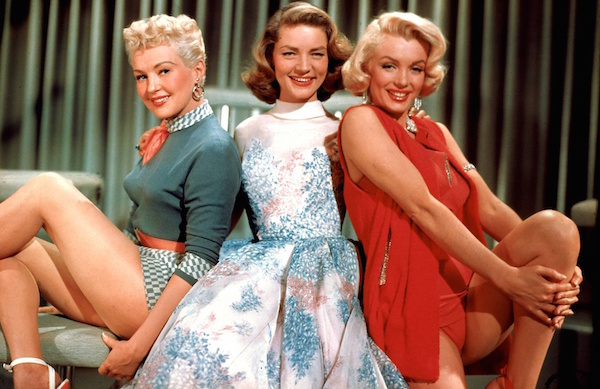preahvihearhotel.com – “How to Marry a Millionaire” is a 1953 American romantic comedy film directed by Jean Negulesco. Known for its glamorous portrayal of New York City and its witty exploration of romance and ambition, the film features an impressive ensemble cast and was one of the first movies filmed in the widescreen Cinemascope format. With its charming storyline and iconic performances, “How to Marry a Millionaire” remains a classic in the romantic comedy genre.
Plot Summary
The film follows the story of three resourceful and ambitious women—Schatze Page (Lauren Bacall), Loco Dempsey (Betty Grable), and Pola Debevoise (Marilyn Monroe)—who set out to find and marry wealthy husbands. They lease a lavish penthouse in Manhattan, posing as women of high society to attract affluent suitors.
As the trio navigates the social scene, they encounter a series of comedic and romantic escapades. Schatze, the group’s mastermind, initially sets her sights on wealthy older men but finds herself drawn to a charming but seemingly broke man, Tom Brookman (Cameron Mitchell). Meanwhile, Loco falls for a man she believes to be wealthy, only to discover he is a struggling forest ranger. Pola, who is nearly blind without her glasses, hilariously misjudges her suitors’ appearances and intentions.
Cast and Characters
The film boasts a stellar cast, each bringing their distinct charm and comedic timing to the screen:
- Lauren Bacall as Schatze Page, the pragmatic and determined leader of the trio.
- Betty Grable as Loco Dempsey, the cheerful and somewhat naïve member of the group.
- Marilyn Monroe as Pola Debevoise, whose comedic misadventures add humor to the story.
- William Powell as J.D. Hanley, a wealthy older widower who is captivated by Schatze.
- David Wayne, Rory Calhoun, and Cameron Mitchell play the romantic interests who challenge the women’s initial plans.
Themes and Style
“How to Marry a Millionaire” explores themes of love, ambition, and the pursuit of happiness. The film humorously examines the idea of marrying for money versus marrying for love, with each character’s journey offering insights into the complexities of relationships.
The film is renowned for its glamorous depiction of 1950s New York City, with elegant costumes, lavish sets, and a sophisticated style that captures the era’s allure. The use of Cinemascope technology enhances the visual appeal, making the film a feast for the eyes.
Reception and Legacy
Upon its release, “How to Marry a Millionaire” was a commercial success and received positive reviews for its witty script and engaging performances. The film’s innovative use of Cinemascope also garnered attention, contributing to its popularity.
Today, “How to Marry a Millionaire” is celebrated as a classic romantic comedy, with Marilyn Monroe’s performance being particularly iconic. The film’s blend of humor, romance, and style continues to captivate audiences, ensuring its place in the pantheon of classic Hollywood cinema.
Conclusion
“How to Marry a Millionaire” remains a charming and entertaining exploration of love and ambition, set against the backdrop of 1950s glamour. With its unforgettable performances and timeless themes, the film continues to delight viewers and stands as a testament to the enduring appeal of classic romantic comedies.
